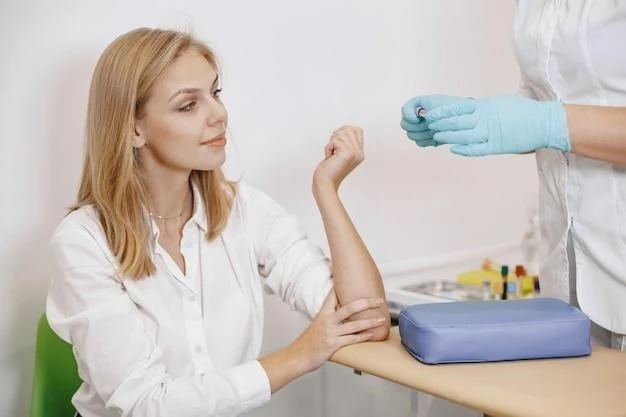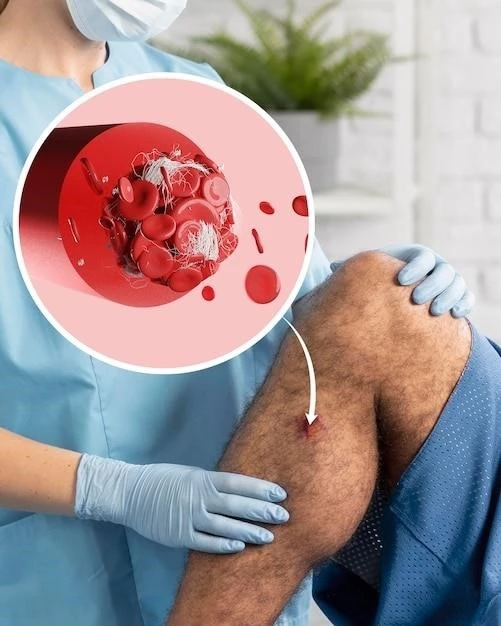Managing Epidermolysis Bullosa Inversa Dystrophica
Epidermolysis Bullosa Inversa Dystrophica is a blistering disorder characterized by skin fragility due to a genetic mutation affecting the connective tissue between the skin layers. The blister formation leads to painful sores and open wounds, making affected areas susceptible to scarring. Genetic testing is essential for confirming the inherited condition.
Treatment options for Epidermolysis Bullosa Inversa Dystrophica include wound care to prevent infection, medication management for pain relief, and skin grafts to promote healing. Consult with a dermatologist for specialized care tailored to your specific needs.
Supportive care plays a crucial role in improving the quality of life for individuals with this condition. It includes proper wound care techniques, managing autoimmune diseases that may arise, and overall wellness strategies. Remember, you are not alone in this journey – seek out a supportive community and healthcare professionals who understand your unique needs.
Understanding Epidermolysis Bullosa
Epidermolysis Bullosa (EB) is a group of genetic skin conditions characterized by extreme skin fragility, leading to blister formation with minimal friction or trauma. One specific type, Epidermolysis Bullosa Inversa Dystrophica, involves blistering within the dermis, causing significant pain and complications.
Individuals with this disorder have a genetic mutation affecting the proteins that help anchor the layers of the skin together, resulting in skin layers that do not adhere properly. This leads to the formation of painful blisters, particularly in areas prone to rubbing, such as the joints or where clothing rubs against the skin.
EB can manifest at birth or during early childhood, and the severity of symptoms can vary widely. It is crucial to understand that EB is not contagious – it is an inherited condition resulting from genetic factors passed down from parents.
Living with EB can be challenging, as even simple activities like bathing or getting dressed can cause painful blisters. In severe cases, the continuous blistering can lead to scarring, contractures (tightening of skin limiting movement), and other complications that impact mobility and quality of life.
Seeking the help of dermatologists and genetic specialists is essential for a comprehensive understanding of the condition. They can provide valuable insights into managing symptoms, potential complications, and offer genetic counseling for families planning to have children.

Understanding the underlying cause of Epidermolysis Bullosa Inversa Dystrophica is the first step towards effective management and care. By educating yourself and your loved ones about this condition, you can better navigate the challenges it presents and make informed decisions regarding treatment options and supportive care.
Symptoms and Challenges
Epidermolysis Bullosa Inversa Dystrophica presents a range of symptoms and challenges that significantly impact the daily lives of individuals affected by this blistering disorder. The hallmark symptom is the formation of blisters within the deeper layers of the skin, leading to painful sores and open wounds.
Common symptoms include skin fragility, where even gentle pressure or friction can cause blisters to form. These blisters are often painful and can result in scarring if left untreated. Areas prone to blister formation include the elbows, knees, hands, and feet, as these regions experience frequent rubbing and pressure.
Challenges faced by individuals with Epidermolysis Bullosa Inversa Dystrophica extend beyond the physical symptoms. The condition can impact mental health and emotional well-being due to chronic pain, limited mobility caused by scarring, and the constant need for wound care. Coping with the psychological effects of living with a chronic condition is an essential aspect of managing EB.
Furthermore, the risk of infection in open wounds is a significant challenge. Proper wound care is crucial to prevent complications such as cellulitis or sepsis, which can arise from untreated wounds. Individuals with EB must adhere to strict hygiene practices and use appropriate dressings to safeguard against infections;
Another challenge is the potential development of autoimmune diseases in individuals with Epidermolysis Bullosa Inversa Dystrophica. Autoimmune conditions can further complicate the management of EB by adding additional layers of symptoms and requiring specific treatment approaches to address both the skin disorder and the autoimmune issue.
It is important for individuals with EB, along with their caregivers and healthcare providers, to recognize and address these symptoms and challenges promptly. By understanding the full scope of symptoms and the associated difficulties, a comprehensive care plan can be developed to optimize quality of life and minimize the impact of Epidermolysis Bullosa Inversa Dystrophica on daily activities.
Diagnosis and Testing
Diagnosing Epidermolysis Bullosa Inversa Dystrophica requires a comprehensive evaluation by healthcare professionals familiar with genetic skin disorders. The diagnostic process typically involves a combination of clinical assessment, genetic testing, and skin biopsies to confirm the presence of the condition.
A dermatologist or genetic specialist will conduct a physical examination to assess the skin fragility, blister formation patterns, and any scarring present in the affected areas. Additionally, they may review the individual’s medical history and family history to identify any genetic factors that could contribute to the development of Epidermolysis Bullosa Inversa Dystrophica.
Genetic testing is a crucial component of diagnosing this inherited condition. By analyzing the specific genetic mutations associated with the disorder, healthcare providers can confirm the presence of EB and determine the subtype, such as Epidermolysis Bullosa Inversa Dystrophica. Genetic testing also plays a critical role in understanding the inheritance pattern of the condition within families.
In some cases, a skin biopsy may be recommended to examine the skin tissue under a microscope. This procedure can provide additional information about the structural abnormalities present in the skin layers of individuals with Epidermolysis Bullosa Inversa Dystrophica, aiding in the accurate diagnosis of the condition.
It is essential for individuals suspected of having EB to undergo thorough diagnostic testing to confirm the presence of the disorder. A timely and accurate diagnosis is key to initiating appropriate treatment options, supportive care, and disease management strategies that can help improve quality of life and mitigate potential complications associated with Epidermolysis Bullosa Inversa Dystrophica.
Treatment Options
Managing Epidermolysis Bullosa Inversa Dystrophica involves a multidisciplinary approach that combines various treatment modalities to address the symptoms and complications associated with this genetic skin disorder. Treatment options aim to promote wound healing, alleviate pain, prevent infections, and improve overall quality of life for individuals with EB.
Wound care is a cornerstone of managing Epidermolysis Bullosa Inversa Dystrophica. Gentle cleansing of open wounds, careful dressing changes, and the use of non-adherent dressings are essential to prevent further damage to fragile skin and reduce the risk of infection. Healthcare providers can offer guidance on proper wound care techniques tailored to the individual’s specific needs.
Medication management plays a crucial role in controlling pain and discomfort associated with EB. Topical creams, ointments, or oral pain medications may be prescribed to alleviate the symptoms of blistering, itching, and soreness. It is important to work closely with healthcare professionals to adjust medication regimens as needed and manage potential side effects.
In cases where chronic wounds do not heal properly, skin grafts may be considered as a treatment option. Skin grafting involves transplanting healthy skin from one area of the body to cover open wounds in areas affected by Epidermolysis Bullosa Inversa Dystrophica. This procedure can promote healing and reduce the risk of scarring and infection.
For severe cases of EB with extensive scarring or contractures limiting mobility, surgical interventions such as release procedures or skin expansion techniques may be recommended to improve range of motion and enhance quality of life. Discussing surgical options with a specialized healthcare team is crucial to determine the most suitable approach for each individual.
Overall, the treatment plan for Epidermolysis Bullosa Inversa Dystrophica should be personalized to address the specific needs and challenges faced by each patient. By combining wound care, medication management, surgical interventions, and supportive therapies, individuals with EB can work towards managing symptoms effectively and enhancing their overall well-being.
Supportive Care
Supportive care is essential in the comprehensive management of Epidermolysis Bullosa Inversa Dystrophica, focusing on improving the quality of life and addressing the unique needs of individuals living with this challenging skin condition. Supportive care encompasses a range of strategies aimed at enhancing physical, emotional, and social well-being.
One crucial aspect of supportive care for individuals with Epidermolysis Bullosa Inversa Dystrophica is providing education and resources to empower patients and their caregivers with knowledge about the condition. Understanding the triggers for blister formation, proper wound care techniques, and strategies for pain management can help individuals navigate daily challenges more effectively.
Psychological support is paramount for individuals coping with the chronic nature of EB. Living with a condition that affects the skin’s integrity and causes constant pain can impact mental health and self-esteem. Counseling services, support groups, and mental health professionals can offer emotional support, coping strategies, and a safe space to express feelings and concerns.
Diet and nutrition play a role in supporting overall health and well-being in individuals with Epidermolysis Bullosa Inversa Dystrophica. A balanced diet rich in vitamins, minerals, and protein can aid in wound healing, strengthen the immune system, and promote skin health. Consulting with a nutritionist or dietitian can help tailor dietary recommendations to individual needs.
Physical therapy and occupational therapy can benefit individuals with EB by promoting mobility, improving muscle strength, and enhancing functional abilities. These therapies can also address contractures, optimize range of motion, and recommend assistive devices or adaptations to support independence in daily activities.
Engaging in a multidisciplinary healthcare team that includes dermatologists, genetic counselors, wound care specialists, and other healthcare professionals is essential for comprehensive supportive care for Epidermolysis Bullosa Inversa Dystrophica. This collaborative approach ensures that all aspects of the condition are addressed, and treatment plans are coordinated to meet the individual’s unique needs.
